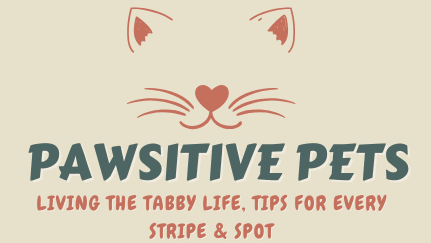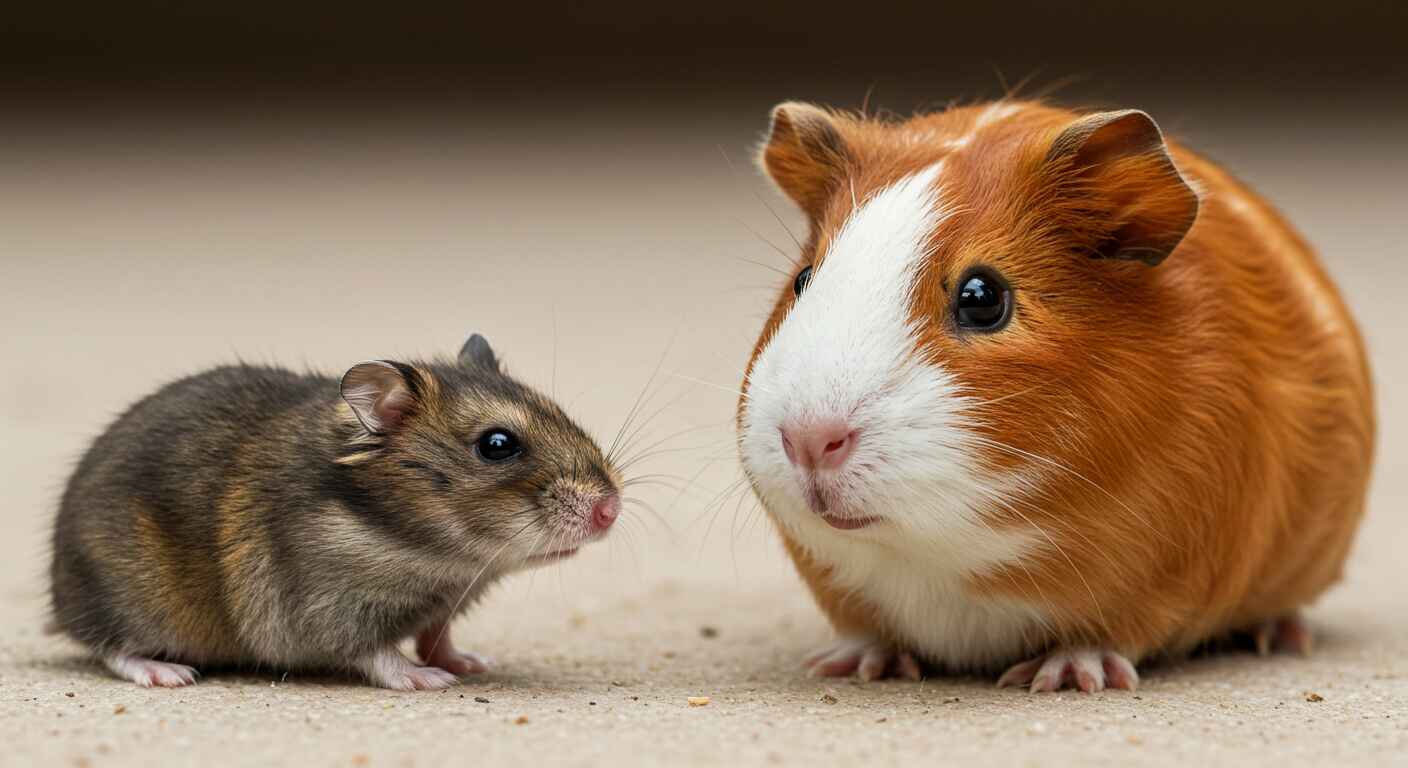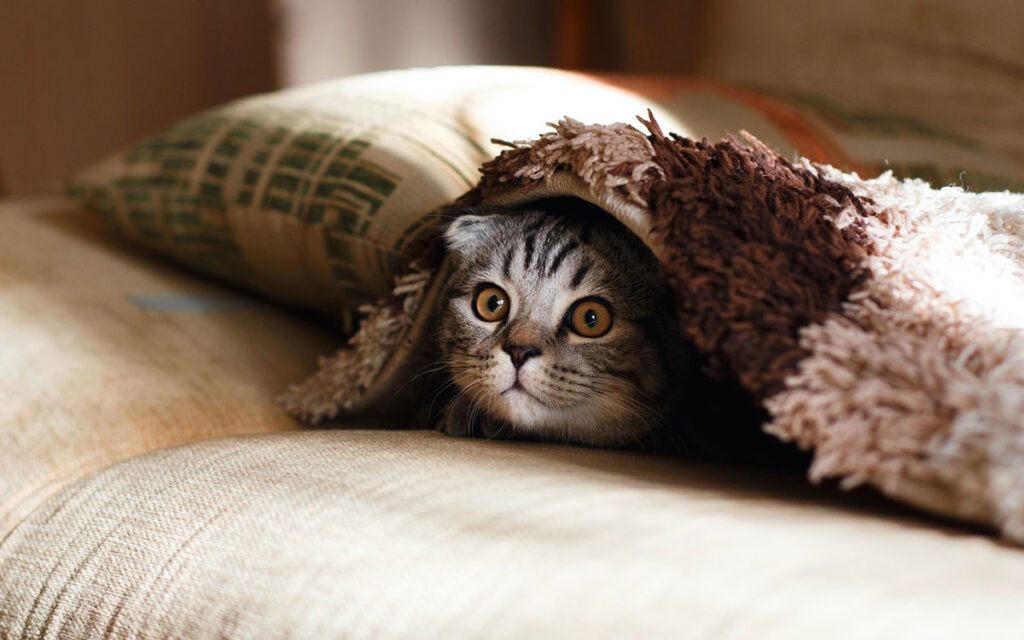Hamster vs Guinea Pig, if you’re exploring this guide, you’re likely at a crossroads many face: trying to decide between two adorable yet very different pets. In this Hamster vs Guinea Pig comparison, we’ll go beyond surface-level pros and cons and dive into real-world pet parenting to help you make the right choice.
For me, it all began in a little house where chaos came with paws, feathers, and fur. My grandmother’s cat Mimi ruled our world from the windowsill, our dogs snored on couches, and our parrot Charlie kept things lively by stealing snacks and squawking at cartoons. We didn’t just raise pets, we grew up with them. They were our siblings, our teachers, our best friends.
That’s the heart behind this blog. I created it to be a cozy corner for pet parents, new or seasoned who just want honest, loving advice from someone who’s been there. Whether it’s cleaning up after Max (our treat-testing labrador), decoding Luna’s intense tabby stare, or listening to Peanut & Butter, our guinea pig duo, squeak for spinach at 6 a.m. we live this stuff every day.
This Hamster vs Guinea Pig guide is more than a comparison. It’s a walk through what life with each of these pets really looks like, from housing and diet to noise levels and bonding. Because choosing the right pet isn’t about picking the cutest. It’s about finding the companion that fits your space, your schedule, and your heart.
Table of Contents
Table of Contents
What Makes Hamsters Unique as Pets?
Hamsters are tiny, independent, and mostly solitary animals. They typically weigh under 7 ounces and have a short lifespan of 2 to 3 years. Because they’re nocturnal, hamsters are most active in the evening and at night, making them ideal for people who work during the day and want quiet pets that don’t require constant attention.
One key trait that stands out is their need for privacy. Unlike guinea pigs, most hamsters must be housed alone to avoid territorial disputes. That said, they’re incredibly entertaining to watch as they zoom through tunnels, run on wheels, and build elaborate nests.
Why Guinea Pigs Are Loved by Families
Guinea pigs are friendly, vocal, and thrive on interaction. They live longer, typically 5 to 8 years, and love being around other guinea pigs and humans alike. Their gentle nature makes them perfect for kids and multi-pet households.
In the ongoing Hamster vs Guinea Pig debate, guinea pigs often win hearts for their affectionate behavior and expressive nature.
They’re also much more expressive than hamsters. Expect a chorus of squeaks when you open the fridge or rustle a veggie bag. Guinea pigs are emotional creatures and need daily social interaction to stay mentally healthy. This makes them ideal for pet lovers who have a bit more time and want a deeper bond.
Physical Characteristics and Appearance
Size, Lifespan, and Breed Differences
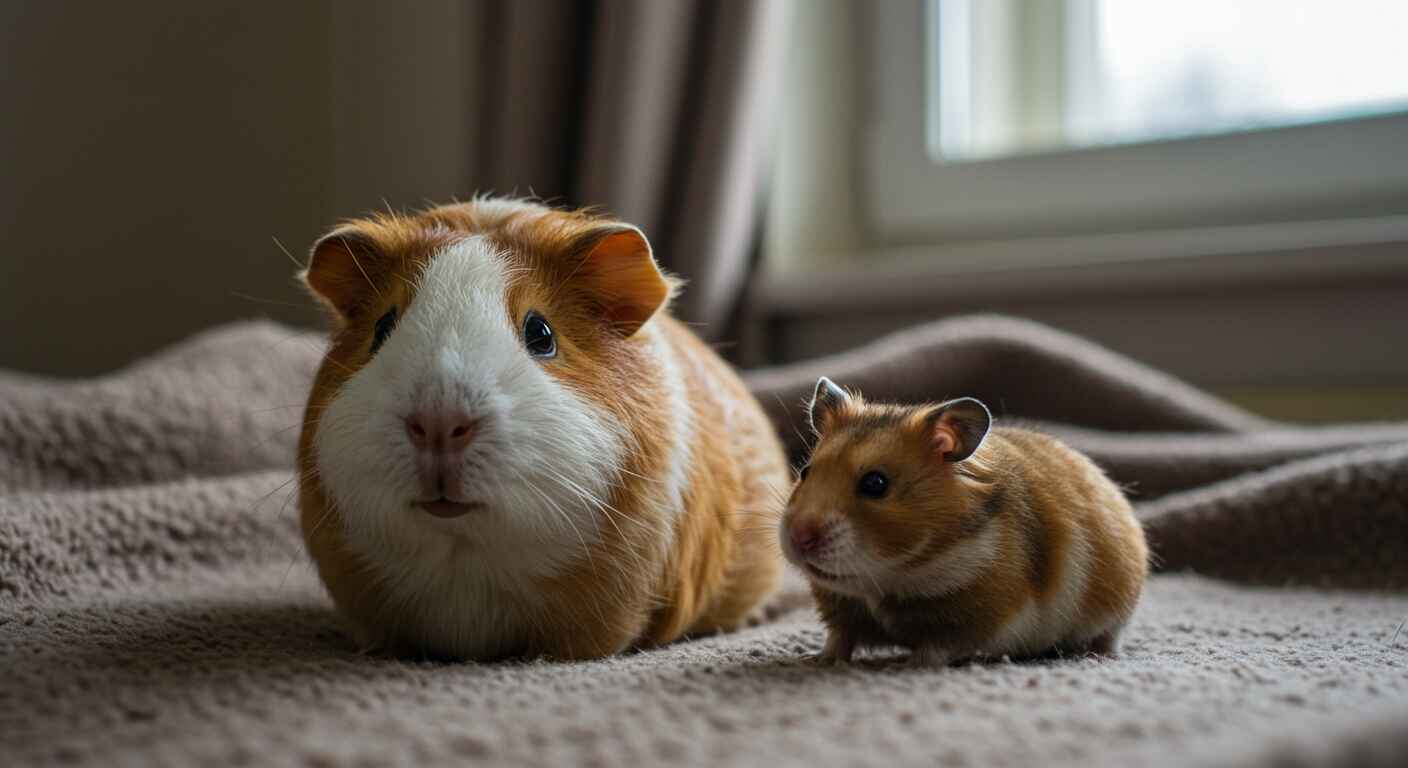
When comparing Hamster vs Guinea Pig, one of the first noticeable differences is their size. Hamsters are much smaller, typically measuring 2 to 6 inches long and weighing under half a pound. Guinea pigs, in contrast, grow between 8 to 12 inches and can weigh 1.5 to 2.5 pounds on average.
Lifespan is another big factor. Hamsters usually live for about 2 to 3 years, while guinea pigs enjoy a longer life, often between 5 and 8 years. If you’re looking for a long-term companion, this difference could be a deciding factor.
In terms of breeds, hamsters come in several varieties, like Syrian (the most popular), Roborovski, and Dwarf. Guinea pigs also have several breeds, from the long-haired Peruvian to the short-haired American and the unique hairless Skinny Pig. Each has different grooming needs and personality quirks.
| Pet Type | Average Size | Lifespan | Popular Breeds |
|---|---|---|---|
| Hamster | 2–6 inches | 2–3 yrs | Syrian, Dwarf, Roborovski |
| Guinea Pig | 8–12 inches | 5–8 yrs | American, Abyssinian, Peruvian |
Personality and Temperament
Hamster Behavior: Solitary, Shy, but Active
In the Hamster vs Guinea Pig comparison, behavior and personality are often deal-breakers. Hamsters are known for being independent and quiet, making them well-suited to people who want a low-maintenance companion. However, they’re not entirely hands-off. These little pets love exploring and staying active during nighttime hours, which can make them a delight to watch.
Hamsters are typically shy and can be skittish with new people or surroundings. Most need consistent, gentle handling to build trust, and some may never become fully cuddly. That said, their energetic antics on a wheel or in a playpen can be wildly entertaining.
Another important trait? Hamsters are territorial. Unlike guinea pigs, they should always be housed alone. Trying to force socialization can lead to stress or even aggression.
Guinea Pig Personality: Social, Vocal, and Affectionate
On the flip side of the Hamster vs Guinea Pig equation, guinea pigs are deeply social and thrive on interaction. They enjoy being handled, often greet their owners with squeals of excitement, and even “popcorn” (a happy jump!) when they’re particularly content. This makes them ideal for kids and families who want a more emotionally interactive pet.
Guinea pigs crave companionship, not just from humans but also from fellow guinea pigs. It’s strongly recommended to keep them in pairs or groups to avoid loneliness and behavioral issues.
Their vocal nature is another standout feature. They use a variety of sounds, chirps, purrs, wheeks, to communicate their needs and moods. For many owners, this expressiveness adds charm and builds a deeper bond.
In terms of Hamster vs Guinea Pig temperament, guinea pigs tend to be gentler and more predictable. They rarely bite, are easy to handle, and adapt well to household routines. If you want a cuddly, responsive pet who enjoys your company, guinea pigs often win this category.
Housing and Space Requirements
Hamster vs Guinea Pig: How Much Room Do They Need?
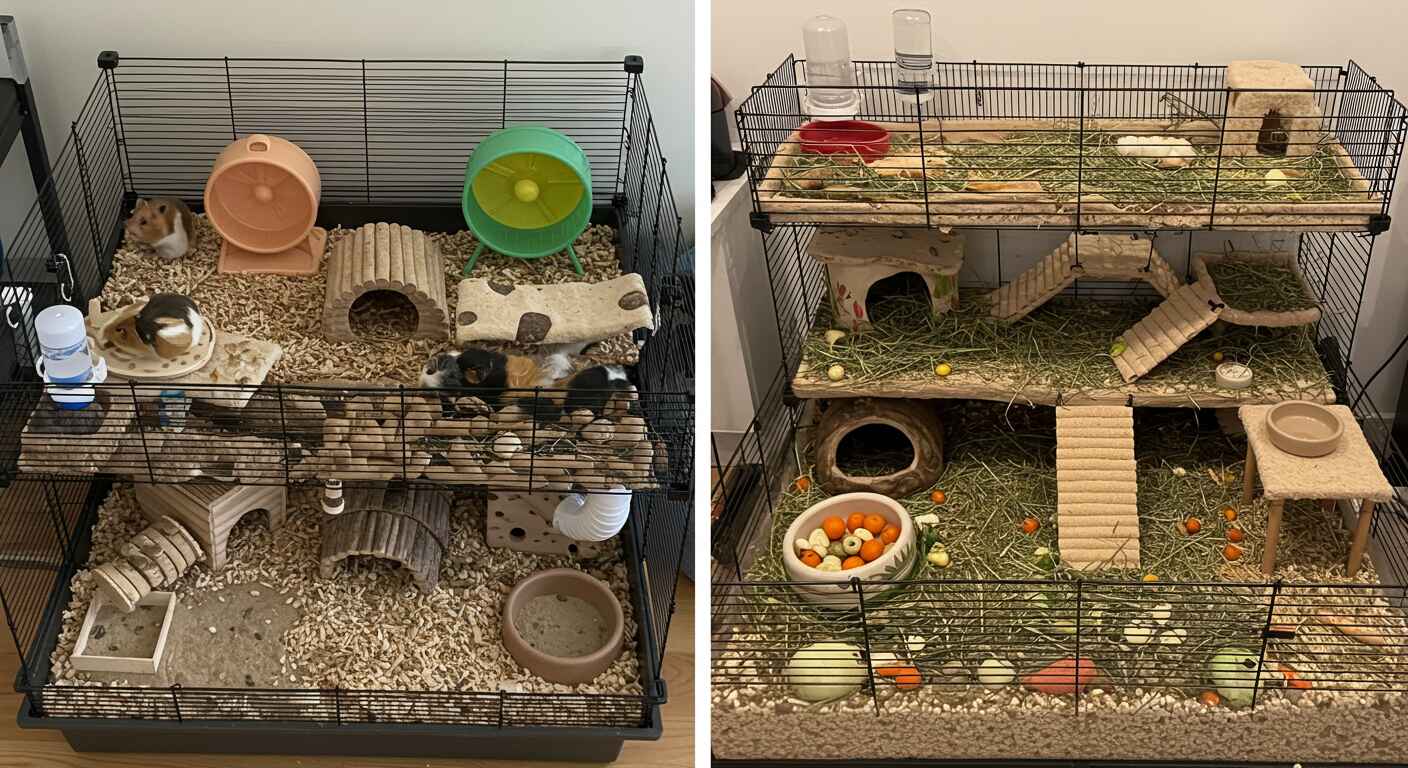
In the Hamster vs Guinea Pig debate, space is a major deciding factor. While both are considered small pets, their housing needs differ significantly. A hamster may be happy in a compact, well-equipped cage, but guinea pigs require considerably more square footage to stay healthy and mentally stimulated.
Creating the Right Habitat for Your Pet
Hamsters are solitary creatures that thrive in environments where they can explore, tunnel, and climb. A single hamster needs at least 450 square inches of floor space, preferably with vertical levels for added enrichment. Their cage should include a solid running wheel, chew toys, bedding for burrowing, and hideouts to feel secure. Also, hamsters are escape artists, so ensure the bars are closely spaced less than ½ inch apart.
On the other hand, guinea pigs are social and spacious creatures. They need flat, open living areas rather than vertical space. A pair should have 7.5 to 10.5 square feet of space to roam. Guinea pigs benefit from open-floor pens or modular cages that include hay racks, tunnels, fleece bedding, and a variety of enrichment items.
Unlike hamsters, guinea pigs can’t be housed alone, they rely heavily on companionship. And because they produce more waste, their habitats require more frequent cleaning, including daily spot-checks and weekly deep cleans.
When deciding between hamsters and guinea pigs, always consider how much space you can realistically provide. While both animals can live indoors comfortably, guinea pigs need a larger footprint and more interaction time to thrive.
Diet and Nutritional Needs
Comparing Hamster vs Guinea Pig Diets
Understanding the dietary needs in the Hamster vs Guinea Pig comparison is crucial to keeping either pet healthy. Though both are small herbivores, their nutritional requirements vary significantly. Providing the right diet affects not just longevity but also behavior, energy levels, and overall well-being.
What Do Hamsters Eat and How Often?
Hamsters are omnivores with a preference for seeds, grains, and small portions of fresh produce. A well-balanced commercial pellet mix designed for hamsters should be the base of their diet. You can supplement it with:
- Small pieces of apples, carrots, or broccoli
- Occasional protein sources like boiled egg or mealworms
- Fresh water available at all times
Treats should be limited, as hamsters tend to hoard food and are prone to obesity. Feeding once per day is generally sufficient, and leftovers should be cleared regularly to prevent spoilage and mold.
Guinea Pig Diet: Hay, Veggies, and Vitamin C
Guinea pigs are strict herbivores with a more demanding and structured dietary need. Unlike hamsters, they can’t produce their own vitamin C, making it essential to their daily intake. A guinea pig’s diet should include:
- Unlimited access to high-quality hay (like Timothy or orchard grass)
- Daily servings of fresh leafy greens such as romaine, parsley, or bell peppers
- Fortified pellets designed specifically for guinea pigs
- A constant supply of fresh, clean water
Because vitamin C is so vital, many owners also offer small pieces of fruit (like oranges or strawberries) as occasional treats.
In this key aspect of care, Hamster vs Guinea Pig differences are clear. Hamsters have more flexibility in their diet, while guinea pigs require strict adherence to daily nutrients, especially fiber and vitamin C.
Grooming, Cleaning, and Health
Grooming Requirements and Hygiene Tips for Hamsters
In the Hamster vs Guinea Pig comparison, hamsters are hands-down the easier option when it comes to grooming. These tiny pets groom themselves regularly and don’t require bathing. However, long-haired varieties or dwarf breeds may benefit from occasional dust baths to absorb excess oils and keep their coats clean.
Hamster cages should be spot-cleaned daily and fully cleaned at least once a week. Use paper-based or aspen bedding to minimize odor and respiratory risks. It’s also important to check your hamster’s teeth and nails, overgrowth can cause eating difficulties and injury if left unchecked.
Common health issues in hamsters include wet tail, respiratory infections, and tumors. Since hamsters are prey animals, they often hide symptoms, so subtle behavioral changes, like loss of appetite or lethargy, should not be ignored.
Another difference in Hamster vs Guinea Pig grooming is their cleanliness habits—hamsters are naturally tidy, while guinea pigs need more owner involvement.
Health Maintenance and Grooming Needs of Guinea Pigs
Guinea pigs require more involvement from their owners when it comes to cleanliness and grooming. Long-haired breeds need daily brushing to prevent tangles and matting, while short-haired breeds still benefit from weekly grooming. Regular nail trimming is essential for all breeds to avoid joint and walking issues.
Their enclosures need more frequent cleaning than hamster cages. Due to their larger size and higher food intake, guinea pigs generate more waste, which can lead to unpleasant odors and increased risk of bacterial buildup if not addressed. Spot-cleaning daily and deep-cleaning once or twice a week is the standard.
Guinea pigs are also prone to unique health concerns like scurvy (vitamin C deficiency), bloat, dental disease, and respiratory infections. Routine checkups, weight monitoring, and a well-balanced diet help keep them healthy.
When it comes to grooming and health management, the Hamster vs Guinea Pig comparison shows a clear difference in time and attention. Guinea pigs demand more frequent upkeep, while hamsters are more self-sufficient, but both still require consistent, loving care.
Time Commitment and Daily Interaction
Daily Time Requirements for Hamsters
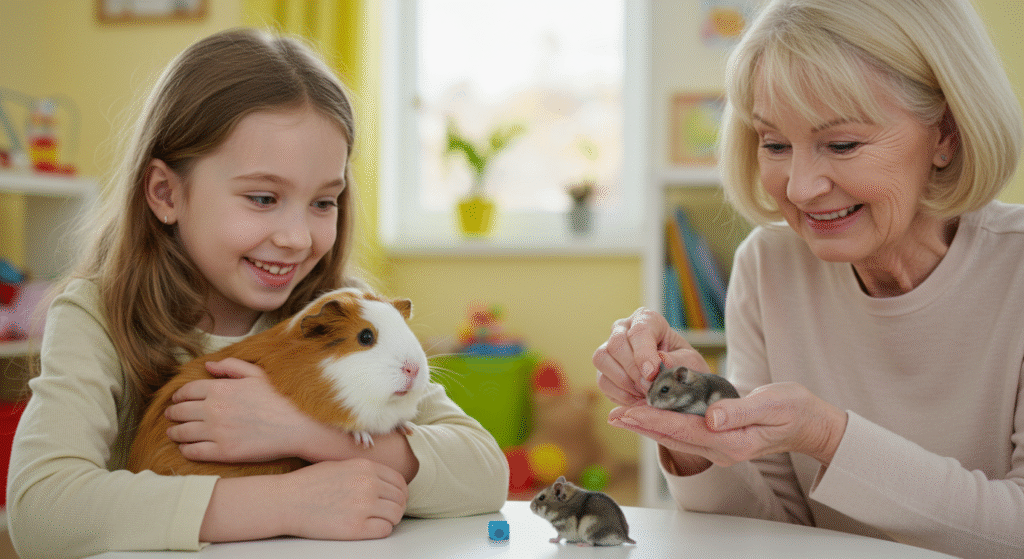
When deciding between a Hamster vs Guinea Pig, one major factor is how much time you’re willing and able to spend with your pet each day. Hamsters are independent animals. They don’t require as much hands-on attention, making them ideal for busier households or individuals with unpredictable schedules.
That said, they still benefit from regular interaction. Spend at least 15-30 minutes a day handling or observing your hamster in a secure play area. This not only builds trust but also keeps them stimulated outside of their cage environment. Keep in mind, they’re nocturnal, so most of this interaction will happen in the evening or night.
Hamsters also require time for habitat cleaning, food refilling, and enrichment setup, but overall, their daily time demand is low compared to guinea pigs.
One of the most important areas in this Hamster vs Guinea Pig comparison is how much time each pet truly requires each day.
The Social Needs of Guinea Pigs
Guinea pigs, on the other hand, are social animals that thrive on daily human interaction. They’re awake during the day, perfect for kids and families who want an affectionate, responsive pet. You’ll want to dedicate at least an hour daily for lap time, brushing, and supervised floor play. Without it, guinea pigs can become bored, lonely, and even depressed.
Beyond bonding, their larger enclosures and higher waste output mean more frequent cleaning and maintenance. Guinea pigs also benefit from spoken communication, they respond to your voice, enjoy routine, and even recognize feeding cues.
In terms of time and attention, the Hamster vs Guinea Pig decision really comes down to lifestyle. Hamsters are better suited to independent owners or night owls, while guinea pigs are perfect for people who enjoy daily companionship and have more time to give.
Cost of Care and Long-Term Commitment
Initial Costs: Cage, Food, and Accessories
When weighing Hamster vs Guinea Pig costs, the difference in size and needs leads to a noticeable gap in price. Hamsters, being smaller and more independent, are cheaper to set up initially. You can expect to spend around $50-$100 for a basic hamster habitat, which includes a cage, bedding, food, water bottle, and a wheel.
Guinea pigs, however, require larger enclosures, higher-quality hay, and must be kept in pairs, so the starting price is much higher. A proper setup for two guinea pigs, including a C&C cage, hideouts, hay racks, bedding, and pellets, can run anywhere from $150 to $300+. In the Hamster vs Guinea Pig breakdown, this initial cost difference is one of the clearest distinctions.
Ongoing Monthly Expenses
Both pets need food, bedding, and occasional vet visits, but guinea pigs typically cost more on a monthly basis. Expect to spend around $20-$30/month for a hamster, covering food, bedding, and occasional toy replacements. In contrast, guinea pig care may cost $40-$60/month, especially if you’re buying fresh veggies, vitamin C supplements, and rotating enrichment items.
Don’t forget veterinary care. While both animals are considered “exotic pets,” guinea pigs are more likely to require routine health checks due to their longer lifespan and susceptibility to dental and digestive issues. Vet costs can vary significantly by region, but exotic pet appointments are usually priced higher than regular dog or cat visits. The Hamster vs Guinea Pig financial comparison isn’t just about setup, it’s about sustaining the right environment over time.
Longevity and Emotional Commitment
In terms of emotional and time investment, guinea pigs typically form stronger bonds with their owners due to their social behavior and longer lifespan, often 5 to 8 years. Hamsters live shorter lives (2 to 3 years) and are more independent, which might suit someone who wants a low-commitment pet experience.
If you’re thinking long-term, Hamster vs Guinea Pig decisions should factor in not just financial readiness, but also your ability to commit emotionally over several years. The longevity of guinea pigs compared to hamsters may sway your decision depending on how long you’re ready to care for your pet.
The emotional journey in choosing Hamster vs Guinea Pig is deeply personal, do you want a short-term companion or a long-term furry friend? Ultimately, your choice between a hamster or guinea pig should align with your budget, schedule, and lifestyle expectations. In the end, your Hamster vs Guinea Pig choice is about matching your heart and habits with the pet that fits best.
Which Is Right for You?
Best for Small Spaces and Quiet Homes
If you’re choosing between Hamster vs Guinea Pig for a small space, the hamster usually takes the win. These compact pets need less room, thrive in solitude, and stick to themselves. That makes them great for apartment living, night owls, and people who prefer an independent companion.
Hamsters don’t need a companion animal, and with their shorter lifespan and minimal space requirements, they’re perfect for people with busier or less consistent routines. In the Hamster vs Guinea Pig decision, hamsters are best suited for quiet environments and individuals seeking a low-maintenance pet.
Best for Kids, Families, and Interaction Lovers
On the other hand, guinea pigs shine in homes that offer time, attention, and interaction. They love company, make adorable vocalizations, and bond with their humans. Families with children, or anyone wanting an expressive, loving pet, will likely find guinea pigs more fulfilling.
They need a larger enclosure, a consistent daily routine, and a playmate, but in return, they offer affection, responsiveness, and a longer commitment. The Hamster vs Guinea Pig comparison highlights that guinea pigs are ideal for people who value daily interaction and emotional connection with their pets.
Final Thoughts: Hamster vs Guinea Pig for Your Lifestyle
So, Hamster vs Guinea Pig, which pet fits your world? If you’re looking for low maintenance, minimal space needs, and less daily interaction, a hamster could be your perfect fit. But if you’re craving a more engaging, affectionate, and social experience, the guinea pig may win your heart.
Ultimately, the Hamster vs Guinea Pig decision depends on what kind of pet experience you’re after. Both are adorable, both are rewarding, but their care needs are vastly different. Choose the one that matches your lifestyle, space, and how much time you want to give.
Frequently Asked Questions
Are hamsters easier to care for than guinea pigs?
Yes, hamsters are generally easier to care for. They require less space, are fine living alone, and don’t need as much daily interaction. In the Hamster vs Guinea Pig comparison, hamsters win for lower maintenance and cost. However, guinea pigs offer more emotional engagement if you have the time and space to care for them properly.
Can guinea pigs live with hamsters?
No, guinea pigs and hamsters should never be housed together. They have completely different social needs, behaviors, and communication styles. Hamsters are territorial and solitary, while guinea pigs are social and gentle. Putting them together could result in injury or stress for both animals.
Do guinea pigs or hamsters live longer?
Guinea pigs typically live longer. On average, hamsters live 2 to 3 years, while guinea pigs often live 5 to 8 years. If you’re looking for a longer-term commitment, the guinea pig is the better option in the Hamster vs Guinea Pig debate.
Are hamsters or guinea pigs better for kids?
Guinea pigs are generally better for kids due to their gentle nature, larger size, and daytime activity. They’re easier to handle and more likely to bond with their young caretakers. Hamsters can be jumpy and are more fragile, making them better suited for older children or adults.
Which pet is quieter: a hamster or a guinea pig?
Hamsters are quieter. They’re mostly active at night and make soft sounds while running on their wheel or nesting. Guinea pigs, on the other hand, are vocal creatures that squeak, purr, and chirp throughout the day, especially at feeding time.
Do guinea pigs smell worse than hamsters?
Both can develop odors if their cages aren’t cleaned regularly. However, guinea pigs tend to produce more waste and need more frequent cleaning. With proper hygiene and care, neither pet should create strong or unpleasant smells.
A Personal Note on Choosing Your Small Companion
Back in my grandmother’s living room, where Mimi the cat napped like a queen and Charlie the parrot raised the alarm over every snack, I learned that pets aren’t just pets, they’re family. That room, full of fur, feathers, and laughter, is where my lifelong bond with animals began.
That same spirit lives here on this site, built for folks who understand that love often comes with a wagging tail or a cheerful squeak. It’s why I take so much care in writing guides like this one. Because whether you’re leaning toward a hamster or a guinea pig, this choice deserves thoughtful care.
The Hamster vs Guinea Pig decision isn’t about which pet is better, it’s about which one is better for you. Are you drawn to the independence and simplicity of a hamster? Or the social, chatty nature of a guinea pig? Only you can decide, but I hope this guide made it easier.
So, if you’re still wondering about Hamster vs Guinea Pig and how either fits into your lifestyle, remember this: the best pet isn’t the most popular or the quietest, it’s the one that fits your rhythm, your heart, and your home.
Don’t miss our tips on How to Build the Perfect Rabbit Habitat at Home to help you prepare for whichever cuddly companion you welcome next.
Thank you for being here, and welcome to the pet family.
